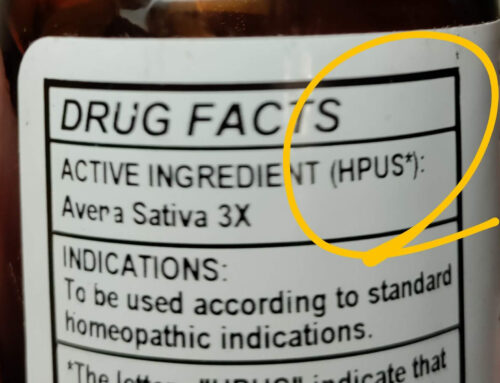This is the second of a series of articles to help consumers better understand what is on a homeopathic label.
The most prominent part of the homeopathic label is the name of the medicine. Unlike medical drugs with trademarked names or over-the-counter medicines with descriptive labels, homeopathic naming of single medicines is purely scientific, using binomial nomenclature to ensure the buyer knows exactly what is in the container. What is binomial nomenclature? It is a fancy way of saying two names–the first is the genus and the second usually is the species.
As a doctor and translator of medical literature, Samuel Hahnemann, the father of homeopathy, was versed in languages and understood that common names often refer to different species in different regions. He also knew that medicine is a global pursuit and must be identifiable in any language. Binomial nomenclature, a dual name system introduced by Carl Linnaeus a generation earlier, was rapidly gaining popularity in professional circles since it standardized the often haphazard and cumbersome naming scheme current until that time.
Fundamental to this system of classification is the use of Latin. Linnaeus developed Latin terminology into a language of scientific description, where it bridges communication gaps across multiple languages to ensure precise identification of discoveries around the world. This has come to be known as Scientific Latin. Since Latin is no longer in common use outside of the scientific community (Vatican City uses an Ecclesiastical derivative), it is not subject to the evolution of meaning and usage that active languages continuously undergo. Using binomial nomenclature ensures that what Samuel Hahnemann studied and used in the 1800s is the same ingredient used today.
Ronald M. Coleman, faculty at California State University, Sacramento, sums this up nicely: “In more technical literature, an organism is typically referred to by its scientific name. In contrast with common names, a scientific name is the same in any language and provides a unique name for an organism such that two people can be sure that they are referring to the same organism.”1
As the Materia Medica2 continues to expand, it is important to ensure accuracy in the finer points of each medicine. Professor George Vithoulkas, an internationally recognized teacher of classical homeopathy, explains this concept.
“Once a remedy has been gathered from a particular geographic location and then proven3 there, that specific preparation must be the one used by all homeopaths prescribing on the basis of that proving. The remedy Pulsatilla, used by all homeopaths, must be the exact species used in the original provings; if a different species were to be used without being re-proven, it is probable that the specific symptom-picture would be enough different as to prevent the desired results….Only by adhering to these standards can our prescribing be sufficiently accurate to attain the reliable results possible in homeopathy.”4
Classical homeopaths only use one homeopathic medicine at a time, just as they were proven. Often, though, manufacturers will design formulations with multiple medicines that cover common symptoms, allowing for greater ease of prescribing or use. Though the combination product will often carry a trademarked name, individual ingredients will still be listed by their Latin names according to their prominence in the formula, along with the potency of each. This allows the experienced prescriber to assess the intended actions of the formula.
By understanding the scientific and specific basis of naming homeopathic medicines, you can be more confident in homeopathy and in choosing and using homeopathics for yourself.
See the previous article in this series: What’s on the Label? HPUS
- Introduction to Scientific Names Sacramento State Faculty, Ronald M. Coleman
- Materia Medica: a collected body of medical materials; contains detailed descriptions of how drugs act and knowledge for prescribers.
- Proving: the testing of a homeopathic substance to find its medicinal properties and know what symptoms it could help cure.
- George Vithoulkas, The Science of Homeopathy, 5th Edition, (New York: International Academy of Classical Homeopathy, 2009), 140.



